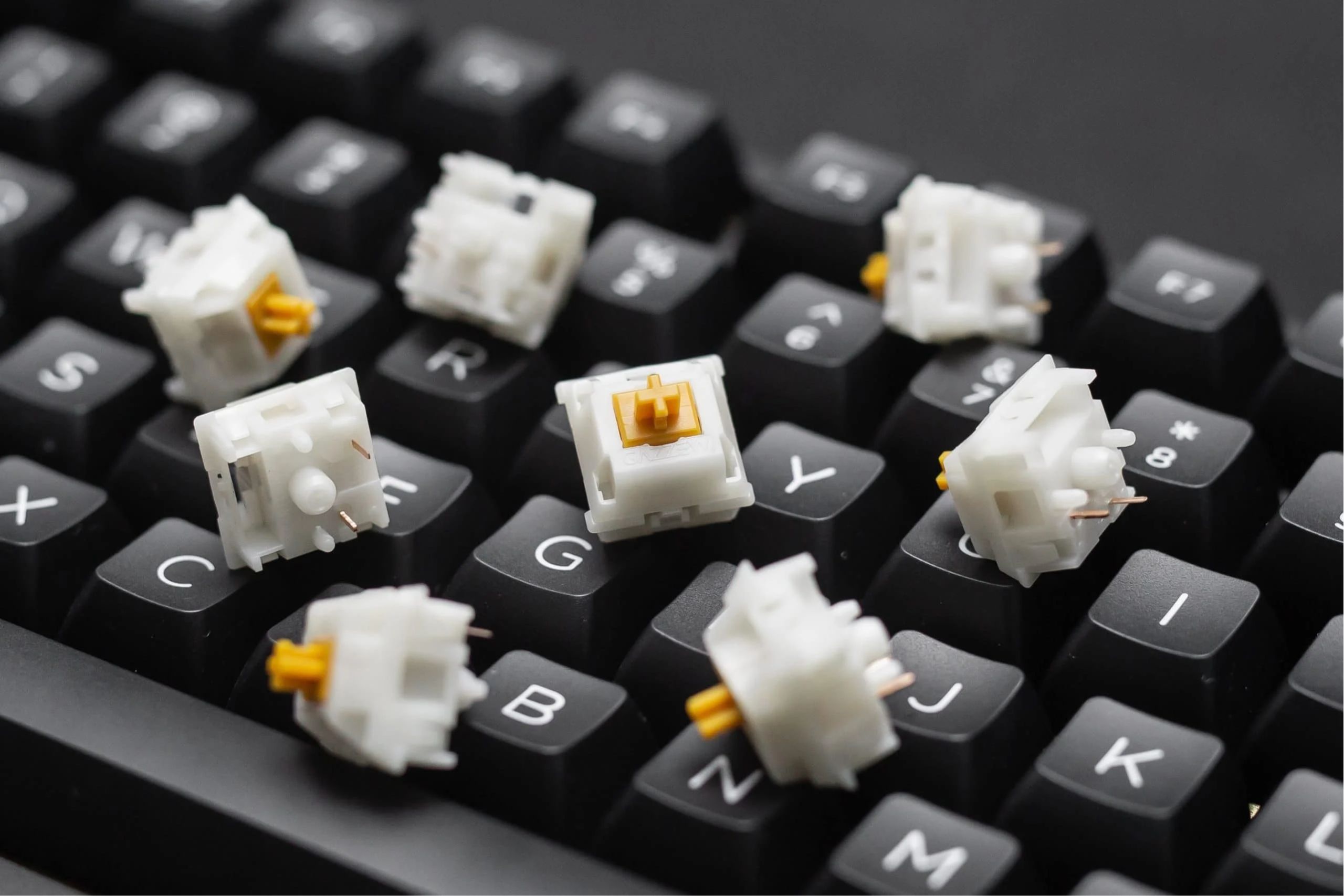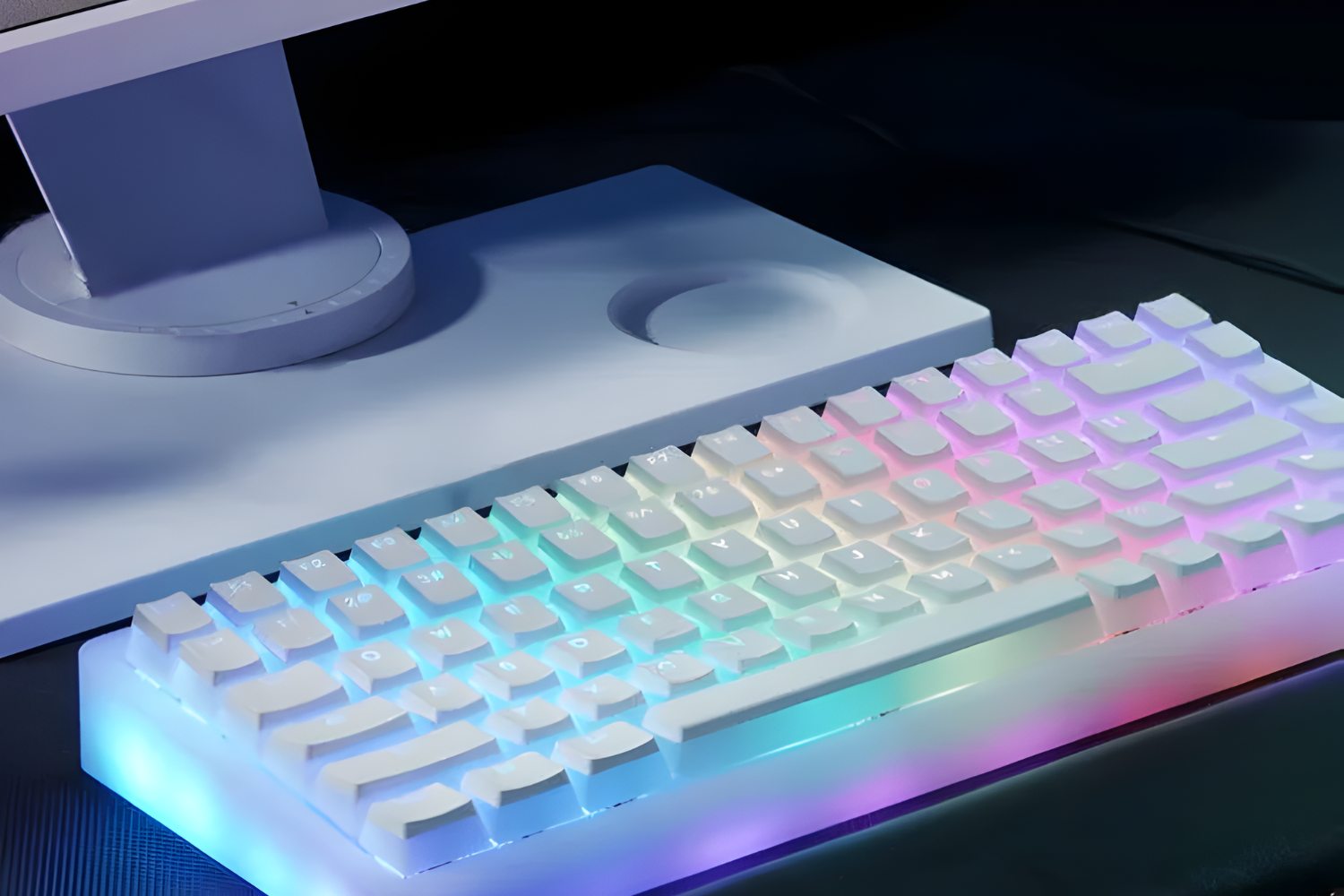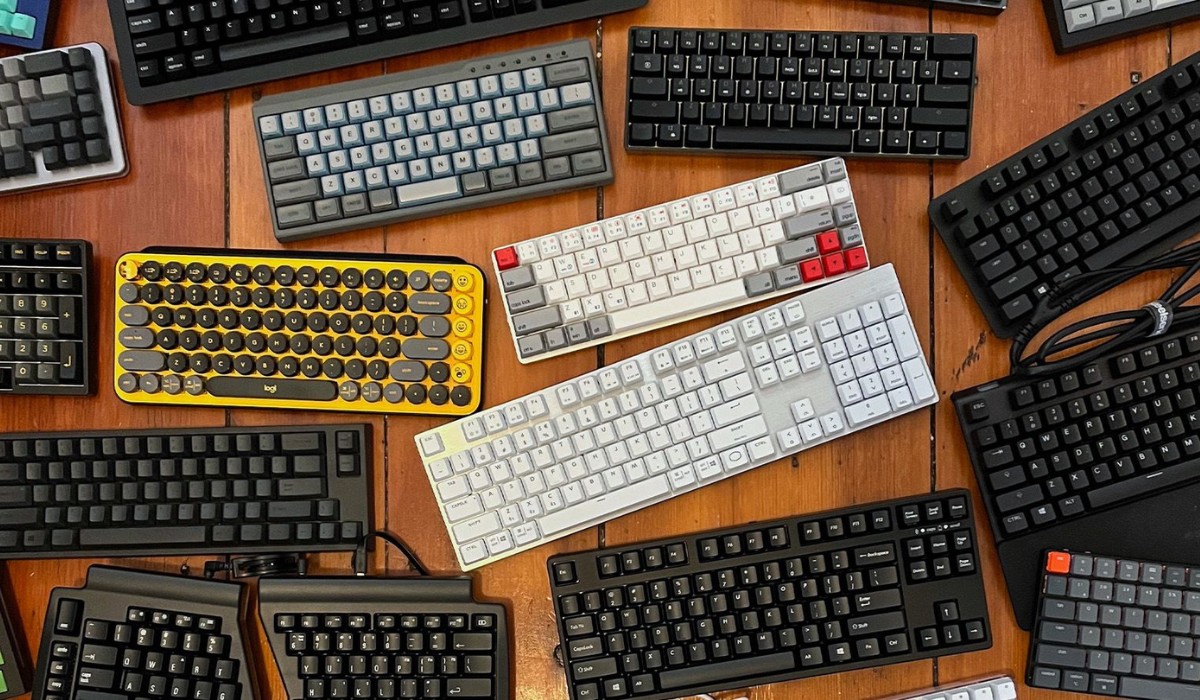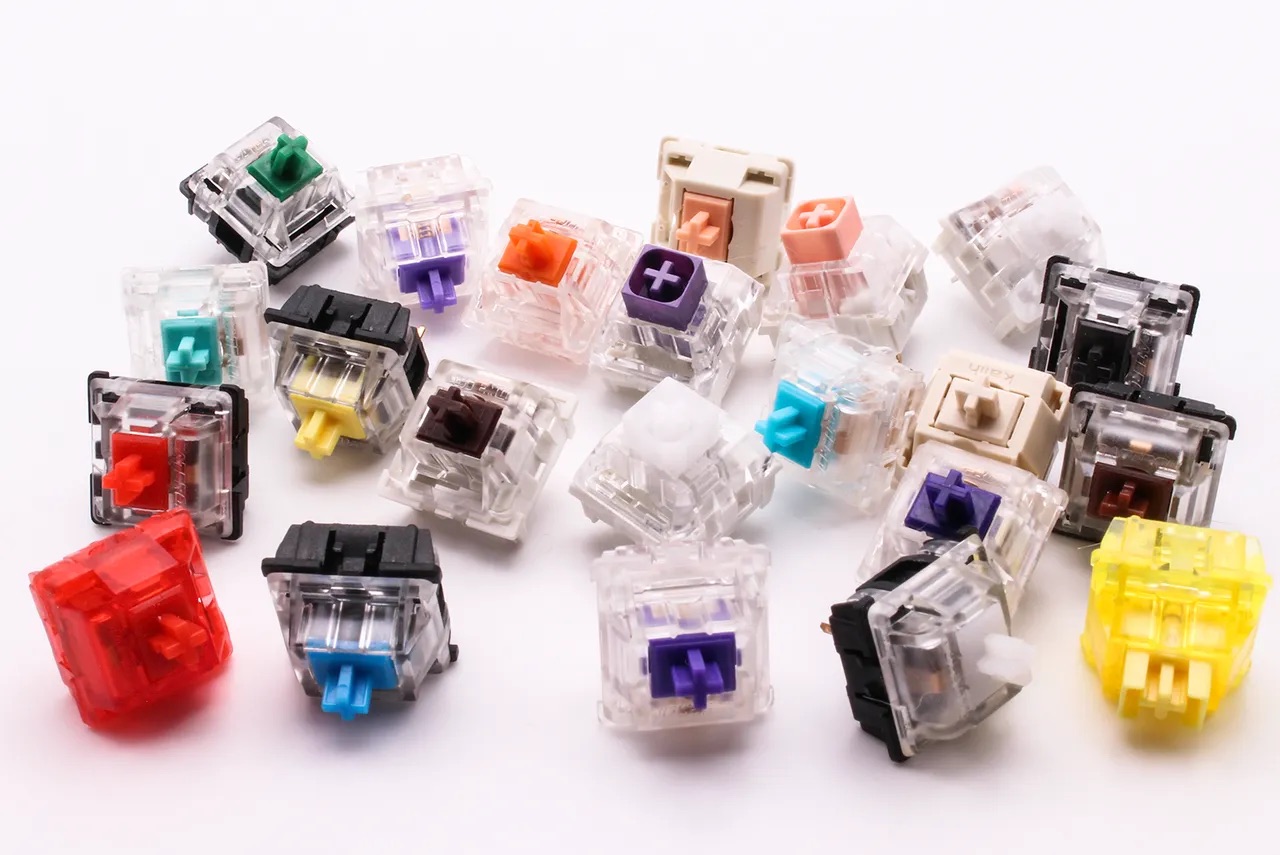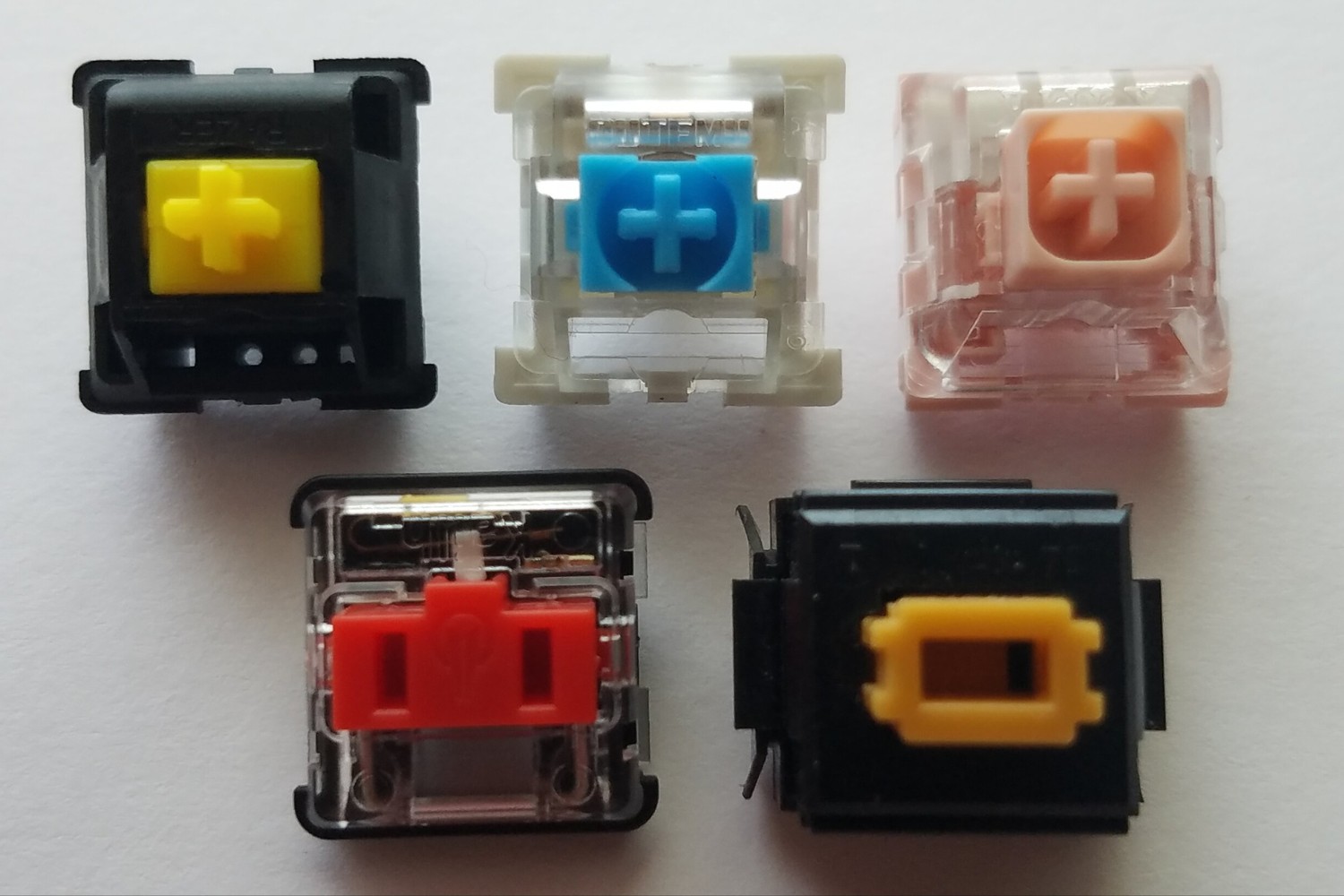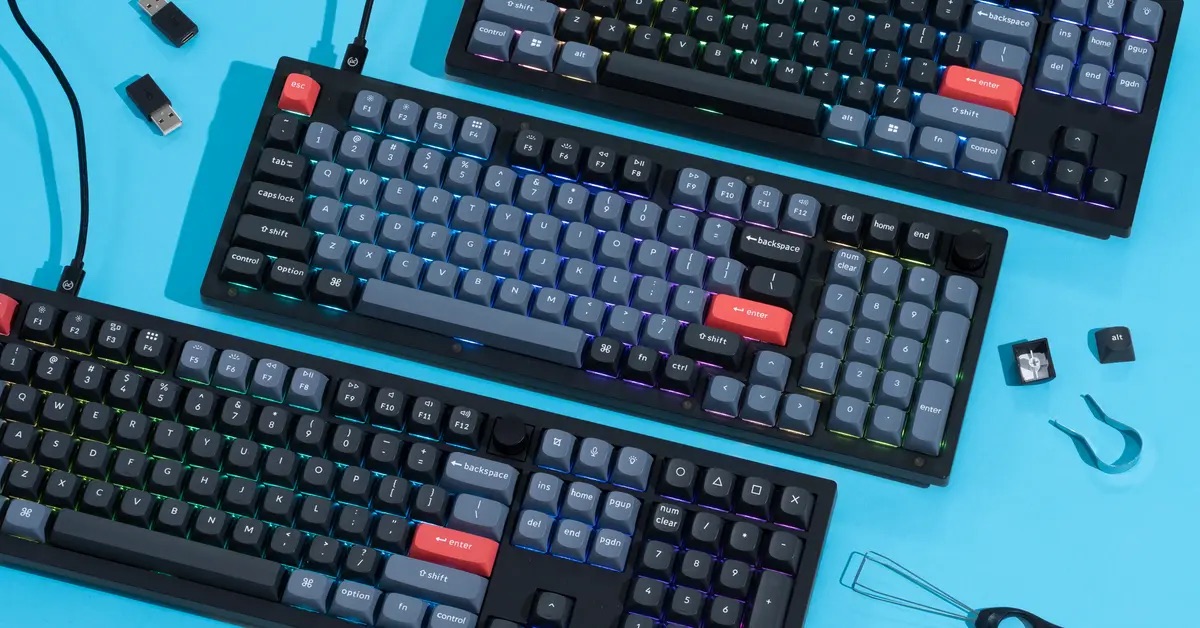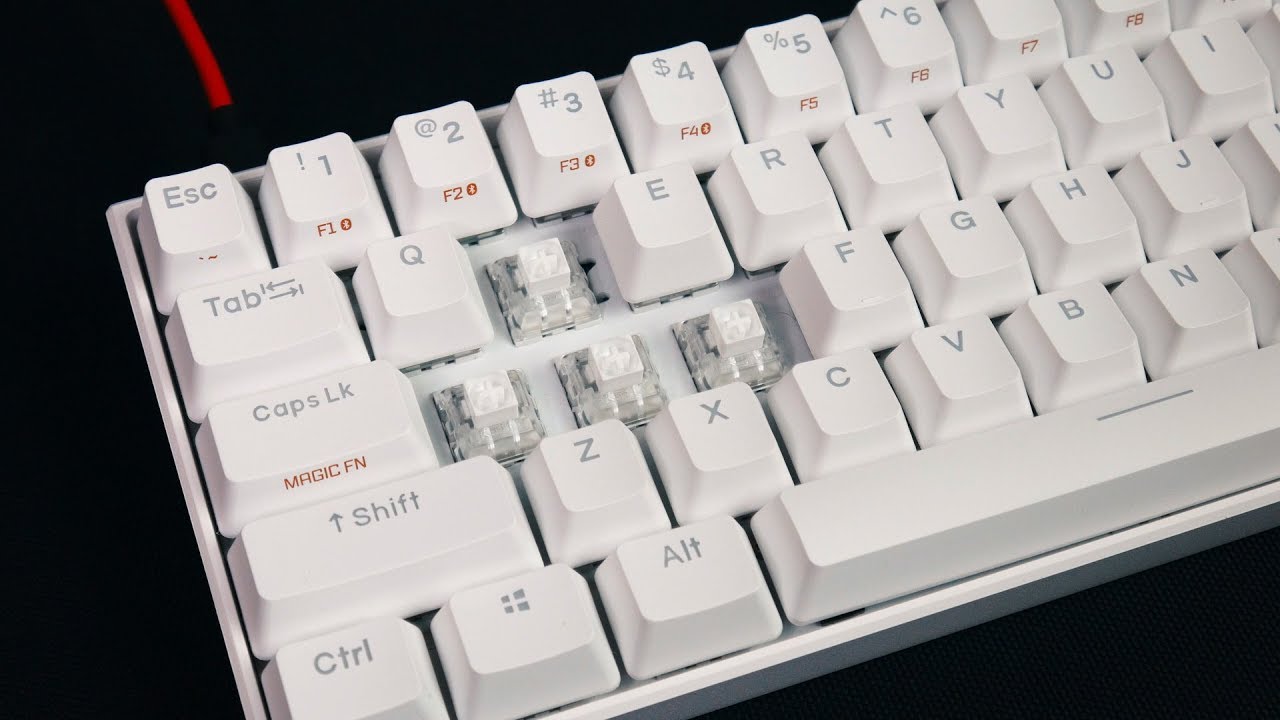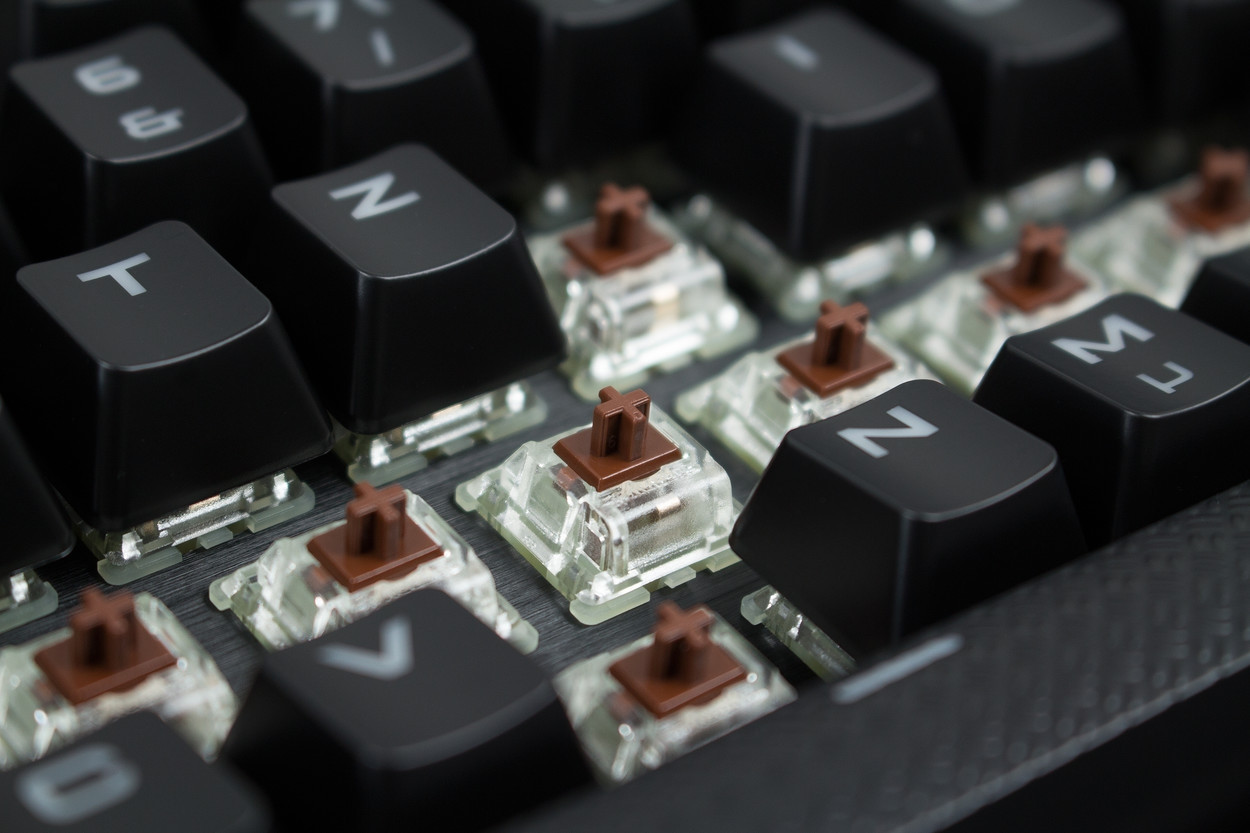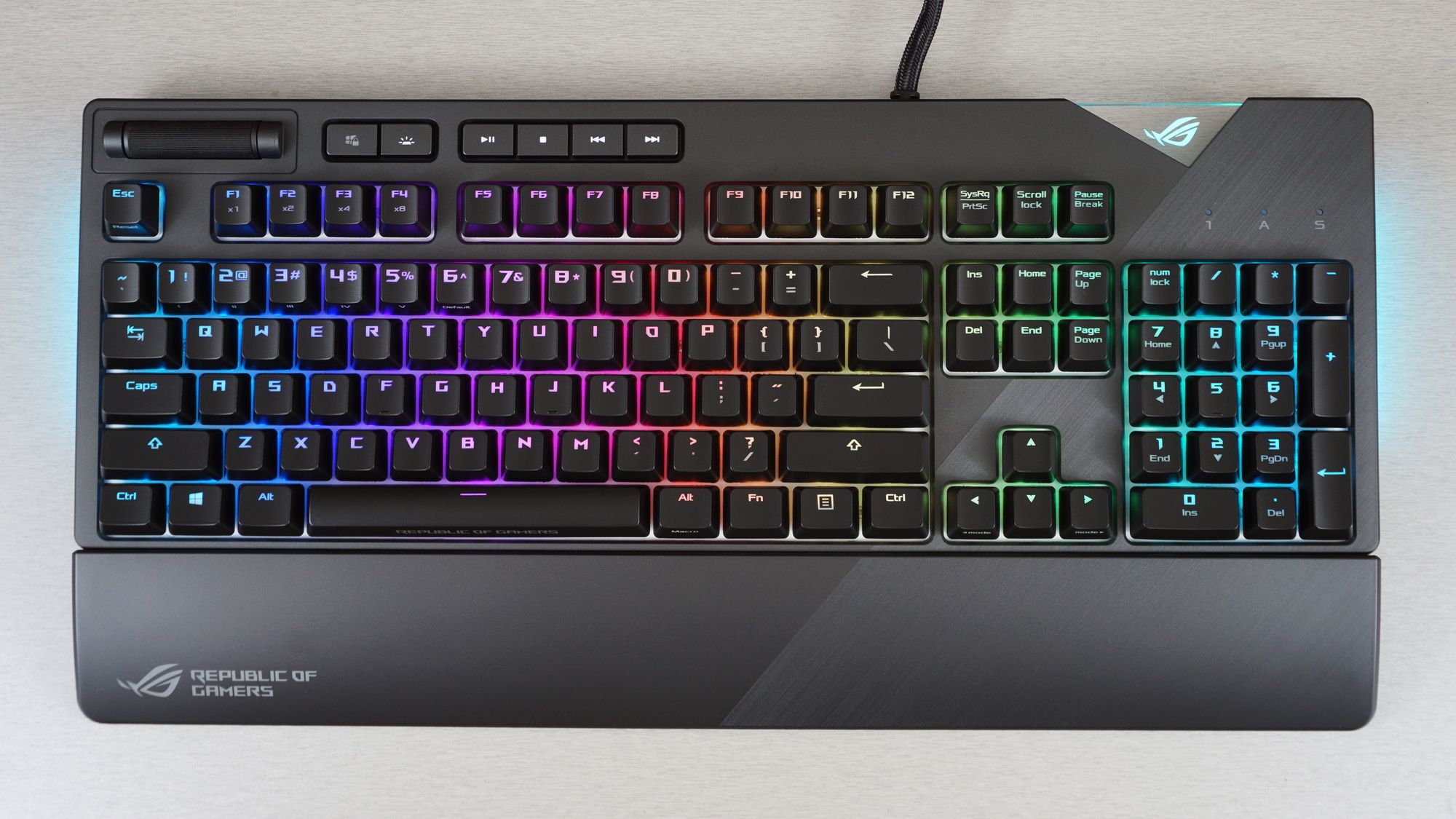Introduction
In today’s fast-paced digital world, the keyboard has become an essential tool for communication, productivity, and entertainment. For many people, typing on a keyboard is a daily activity that requires comfort, precision, and efficiency. This is where tactile keyboards come into play. Tactile keyboards have gained popularity among professionals, gamers, and enthusiasts for their unique feel and enhanced typing experience.
A tactile keyboard provides a physical response when a key is pressed, giving the user a satisfying sensation and a clear indication that the keypress has been registered. This tactile feedback not only improves typing accuracy but also adds a level of engagement and satisfaction to the typing process.
In this article, we will explore what tactile keyboards are, how they work, and the benefits they offer. We will also discuss the different types of tactile keyboards available and provide tips for selecting the right one for your needs. Additionally, we will address common myths associated with tactile keyboards and offer maintenance and cleaning tips to ensure the longevity of your keyboard.
If you are someone who spends a significant amount of time typing or gaming, investing in a tactile keyboard could greatly enhance your overall experience. So, let’s dive deeper into the world of tactile keyboards and discover what makes them a popular choice among keyboard enthusiasts.
What is a Tactile Keyboard?
A tactile keyboard is a type of keyboard that provides physical feedback to the user when a key is pressed. Unlike standard membrane or rubber dome keyboards, which have a mushy and indistinct feel, tactile keyboards have individual mechanical switches for each key that offer a distinct tactile bump and audible click.
The tactile feedback is achieved through the use of mechanical switches that have a mechanism known as a “tactile leaf.” When a key is pressed, the keycap pushes down on the tactile leaf, which snaps back up when the key is released. This action creates the tactile bump and provides the user with a tactile sensation as well as an audible click sound.
The tactile feedback of these keyboards can be customized to suit individual preferences. Some keyboards offer a more pronounced and tactile bump, while others provide a smoother and less pronounced tactile feedback. The level of feedback can be adjusted based on personal preference, making tactile keyboards versatile for various typing styles and preferences.
One of the key advantages of tactile keyboards is the improved typing accuracy they offer. The physical feedback helps users to know when a keypress is registered, reducing the chances of accidental key presses. This becomes especially beneficial for touch typists who rely on muscle memory and can type more accurately and efficiently with the additional tactile feedback.
Tactile keyboards are not limited to just typing; they are also popular among gamers. The tactile feedback provides gamers with a more responsive and immersive gaming experience. The distinct tactile bump and audible click can give gamers a quick and precise response, allowing them to make split-second decisions and execute actions with precision.
Overall, tactile keyboards offer a more engaging and satisfying typing experience compared to other types of keyboards. Whether you are a writer, programmer, gamer, or simply someone who spends a significant amount of time on their computer, a tactile keyboard can greatly enhance your efficiency, accuracy, and overall enjoyment during typing sessions.
How Does a Tactile Keyboard Work?
A tactile keyboard operates using mechanical switches that provide the distinct tactile feedback and audible click. These switches are responsible for the responsive and engaging typing experience that tactile keyboards offer.
Under each keycap of a tactile keyboard, there is an individual mechanical switch. These switches come in various types, with the most popular being Cherry MX and Kailh switches. Each switch contains several components that work together to register a keypress and provide the tactile feedback:
- Actuation Point: This is the point at which a keypress is registered. When you press a key on a tactile keyboard, the switch is designed to register the keypress before the keycap hits the bottom of the switch. This allows for faster typing speed and reduces the need for bottoming out the keys.
- Tactile Bump: The tactile feedback is achieved through a bump in the switch mechanism. As you press down on a key, you can feel a slight resistance before the key reaches the actuation point. This bump indicates that the keypress has been registered, providing the user with tactile feedback.
- Click Sound: In addition to the tactile bump, some tactile switches also produce an audible click sound. This click is generated by a small metal spring inside the switch that snaps back into place when the key is released. The click sound adds another layer of satisfaction and feedback to the typing experience.
When a key is pressed on a tactile keyboard, the tactile leaf mechanism inside the switch is depressed, allowing electrical contact to be made between two metal plates. This completes the circuit and sends a signal to the computer that a specific key has been pressed. When the key is released, the tactile leaf returns to its original position, breaking the contact and sending another signal that the key has been released.
It is worth noting that different types of mechanical switches may have variations in the design and feel of the tactile feedback. Some switches may have a more pronounced tactile bump and louder click sound, while others may offer a smoother and quieter typing experience. It is important to consider your personal preferences and typing style when choosing a tactile keyboard with the desired switch type.
In summary, a tactile keyboard works by using individual mechanical switches that provide a distinct tactile bump and, in some cases, an audible click sound. The switches register keypresses at the actuation point, providing tactile feedback to the user. The tactile experience offered by these switches enhances typing accuracy, speed, and overall satisfaction during typing sessions.
Benefits of Using a Tactile Keyboard
Using a tactile keyboard offers numerous benefits that can greatly improve your typing experience and overall productivity. Here are some of the key advantages of using a tactile keyboard:
- Enhanced Typing Accuracy: The tactile feedback provided by a tactile keyboard allows you to feel and confirm each keypress, reducing the chances of accidental keystrokes. This increased accuracy is particularly beneficial for touch typists who rely on muscle memory.
- Improved Typing Speed: The responsive and engaging nature of tactile keyboards can enhance your typing speed. The tactile feedback allows you to transition between keypresses more quickly, resulting in faster and more efficient typing.
- Increased Comfort: Tactile keyboards offer a more comfortable typing experience. The tactile bump and satisfying feedback can reduce the strain on your fingers and hands, making long typing sessions more enjoyable and less fatiguing.
- Enhanced Productivity: With improved accuracy, speed, and comfort, using a tactile keyboard can boost your overall productivity. Whether you are writing, programming, or performing other tasks that involve extensive typing, a tactile keyboard can help you get things done more efficiently.
- Engaging Typing Experience: Tactile keyboards provide a more satisfying and enjoyable typing experience. The tactile bump, combined with the audible click (if present), adds a level of excitement and engagement to each keystroke, making typing a more immersive activity.
- Customization Options: Tactile keyboards often offer customization options, allowing you to select the level of tactile feedback that suits your preference. Some keyboards even allow you to swap out the mechanical switches to achieve a different typing feel.
- Durability: Tactile keyboards with mechanical switches are known for their durability and longevity. The individual switches are designed to withstand millions of keystrokes, making the keyboard a long-term investment.
- Gaming Advantage: Tactile keyboards are highly popular among gamers. The tactile feedback and responsive nature of these keyboards provide gamers with a competitive advantage, enabling precise and quick movements during gameplay.
- Improved Ergonomics: Some tactile keyboards feature ergonomic designs, including curved key layouts, wrist rests, and adjustable keyboard heights. These ergonomic features promote a more natural and comfortable hand position, reducing the risk of repetitive strain injuries.
Overall, using a tactile keyboard can greatly enhance your typing experience and provide significant benefits in terms of accuracy, speed, comfort, productivity, and overall satisfaction. Whether you are a professional typist, a programmer, or a gaming enthusiast, a tactile keyboard can revolutionize your daily interactions with the keyboard and elevate your overall performance.
Types of Tactile Keyboards
Tactile keyboards come in various types, each offering a unique typing experience and catering to different user preferences. Here are some of the most common types of tactile keyboards:
- Mechanical Keyboards: Mechanical keyboards are the most popular type of tactile keyboards. They use individual mechanical switches for each key, providing distinct tactile feedback and a satisfying typing experience. Mechanical keyboards offer a wide range of switch options, such as Cherry MX, Kailh, and Gateron switches, each with its own characteristics and feel.
- Membrane Keyboards: Membrane keyboards are another type of tactile keyboard, although their tactile feedback is less pronounced compared to mechanical keyboards. Membrane keyboards use a rubber dome mechanism that provides a subtle tactile bump when a key is pressed. They are generally more affordable and quieter than mechanical keyboards.
- Scissor Switch Keyboards: Scissor switch keyboards are commonly found on laptop keyboards. They use scissor-like mechanisms attached to each key for stability and a snappy, tactile feel. Scissor switches offer a low profile and quiet typing experience.
- Topre Keyboards: Topre keyboards use a unique electrostatic capacitive switch technology. They offer a smooth and tactile typing experience and are known for their high-quality construction and durability. Topre keyboards strike a balance between the feel of mechanical and membrane keyboards.
- Hybrid Keyboards: Hybrid keyboards combine different types of switches to provide a customized typing experience. They may feature a mix of mechanical, membrane, or scissor switches, allowing users to tailor the feel and feedback of the keyboard to their preference.
- Ergonomic Keyboards: Ergonomic keyboards are designed with a focus on comfort and reducing strain on the hands and wrists. They feature a split layout, curved keys, and various ergonomic features to encourage a more natural hand and wrist position while typing. Some ergonomic keyboards also incorporate tactile switches to enhance the typing experience.
It’s essential to consider your typing style, preferences, and use case when choosing the right type of tactile keyboard for your needs. The choice between mechanical, membrane, scissor switch, Topre, hybrid, or ergonomic keyboards will depend on factors like desired tactile feedback, typing speed, noise level, and budget.
Keep in mind that each type of tactile keyboard has its own unique characteristics, and trying out different types of keyboards is the best way to determine which one suits you best. Whether you prefer the satisfying click of a mechanical keyboard or the subtle tactile bump of a membrane keyboard, there is a tactile keyboard type out there that will enhance your typing experience and meet your requirements.
Choosing the Right Tactile Keyboard
When it comes to choosing a tactile keyboard, there are several factors to consider to ensure you find the right one that matches your preferences and needs. Here are some key considerations when selecting a tactile keyboard:
- Switch Type: The type of switch used in a tactile keyboard greatly affects the typing experience. Mechanical switches, such as Cherry MX Brown or Blue, are known for their distinct tactile feedback and audible click. Membrane keyboards offer a softer tactile bump. Consider trying out different switch types to see which one offers the desired level of feedback and typing feel.
- Keycap Material and Design: Keycaps can be made from different materials (such as ABS or PBT) and may have different designs, such as sculpted or uniform profiles. Keycap material and design can impact the overall typing experience and durability of the keyboard.
- Layout: Consider the keyboard layout that makes you comfortable. There are various layouts available, including full-size, tenkeyless (TKL), compact, and ergonomic layouts. Choose a layout that suits your typing habits and available desk space.
- Backlighting and Customization: If you prefer typing in low-light conditions or want a visually appealing keyboard, consider the backlighting options available. Some keyboards offer customizable RGB lighting for a personalized look.
- Budget: Determine your budget for a tactile keyboard. Mechanical keyboards tend to be more expensive, especially those with premium switches, while membrane keyboards are generally more affordable.
- Noise Level: Think about the noise level that suits your needs. Mechanical keyboards with clicky switches can produce more noise, which may not be suitable for a quiet work environment. Consider quieter switches, like tactile switches with dampeners if noise is a concern.
- Gaming Features: If you are a gamer, you may want to consider keyboards with gaming-specific features like anti-ghosting, N-key rollover, and programmable macro keys to enhance your gaming experience.
- Reviews and Recommendations: Read reviews and get recommendations from other users or trusted sources to learn about the performance, reliability, and overall user experience of the tactile keyboards you are considering.
Ultimately, the right tactile keyboard for you depends on personal preference. Factors such as typing style, comfort, durability, and budget will play a significant role in making the best choice. It can be helpful to try out different keyboards in person or read detailed descriptions and reviews to make an informed decision.
By considering these factors and weighing your priorities, you can choose a tactile keyboard that offers the optimal typing experience, allowing you to type comfortably, accurately, and speedily for years to come.
Common Myths About Tactile Keyboards
Tactile keyboards have become increasingly popular, but along with their rise in popularity, various myths and misconceptions have emerged. Let’s debunk some of the common myths surrounding tactile keyboards:
- Myth 1: Tactile Keyboards are Noisy: While it is true that some tactile keyboards, particularly those with clicky switches, can produce audible sounds, not all tactile keyboards are loud. There are quieter options available, such as tactile switches with dampeners or keyboards with non-clicky switches like Cherry MX Brown or Topre switches.
- Myth 2: Tactile Keyboards are Only for Gamers: While tactile keyboards are indeed popular among gamers due to their responsive feedback, they are not limited to gaming. Tactile keyboards offer benefits for any user who wants a more engaging typing experience, improved accuracy, and increased comfort during long typing sessions.
- Myth 3: Tactile Keyboards are Uncomfortable: Some people associate tactile keyboards with a stiff and uncomfortable typing experience. However, this is not universally true. The level of tactile feedback can vary depending on the switch type and personal preference. Many users find tactile keyboards to be comfortable and satisfying to type on, especially when they choose the right switch type for their needs.
- Myth 4: Tactile Keyboards Are Fragile: One common misconception is that mechanical keyboards are fragile compared to membrane keyboards. In reality, high-quality mechanical keyboards are often more durable and long-lasting due to the individual switches’ construction. The mechanical switches are designed to withstand millions of keystrokes, making them a reliable choice for long-term use.
- Myth 5: Tactile Keyboards are Only for Professional Typists: While professional typists certainly appreciate the advantages of tactile keyboards, they are not exclusively meant for them. Tactile keyboards can benefit anyone who spends a significant amount of time typing, such as writers, programmers, students, and everyday computer users.
- Myth 6: Tactile Keyboards Are Expensive: While it is true that high-end mechanical keyboards can be quite expensive, there are also affordable options available in the market. Membrane keyboards or entry-level mechanical keyboards can provide a tactile typing experience at a more budget-friendly price point.
- Myth 7: Tactile Keyboards Are All the Same: This myth assumes that all tactile keyboards offer the same typing experience. In reality, the tactile feel can vary depending on the switch type, keycap material, and overall build quality. Each brand and model may have its unique characteristics and typing feel, so it’s important to explore different options to find the one that suits your preferences.
It’s important to dispel these common myths to ensure that prospective users have accurate information when considering a tactile keyboard. Tactile keyboards provide a range of benefits, and with the wide variety of options available, there is sure to be a tactile keyboard that meets your specific preferences and needs.
Maintenance and Cleaning Tips for Tactile Keyboards
Maintaining a clean and well-functioning tactile keyboard is essential to preserve its performance, longevity, and overall typing experience. Here are some maintenance and cleaning tips to keep your tactile keyboard in optimal condition:
- Regular Cleaning: Dust, dirt, and debris can accumulate over time and affect the performance of your keyboard. Use a can of compressed air or a soft brush to gently remove any loose particles or debris from between the keys.
- Prevent Liquid Damage: To avoid liquid spills damaging your tactile keyboard, be cautious when consuming beverages or working near liquids. If a liquid spill does occur, immediately turn off your keyboard, disconnect it from the power source, and thoroughly dry it before using it again.
- Keycap Removal: Some keyboards allow you to remove the keycaps for deeper cleaning. Use a keycap puller or gently pry off the keycaps with your fingers to clean them individually. Be careful not to damage the switches or the keycap stems in the process.
- Plastic Keycap Cleaning: If your keycaps are made of plastic, you can clean them with a mild soap solution and a soft cloth. Gently wipe each keycap, removing any stains or marks. Ensure that the keycaps are completely dry before reattaching them to the keyboard.
- Metal or PBT Keycap Cleaning: For metal or PBT keycaps, you can use a damp cloth or cotton swab with a mild cleaner. Avoid using abrasive substances or harsh chemicals, as they can damage the keycaps’ surface.
- Cleaning the Switches: It is generally not recommended to disassemble the switches for cleaning. However, if you notice any significant issues or sticky keys, you can refer to the manufacturer’s instructions or seek professional assistance for a more thorough cleaning or switch replacement.
- Keyboard Frame Cleaning: Clean the keyboard frame using a soft, slightly damp cloth. Avoid using excessive moisture, as it can seep into the switches or electronic components and cause damage.
- Use Keyboard Covers or Dust Covers: Consider using a keyboard cover or dust cover when not using your tactile keyboard to prevent dust, dirt, and debris from settling on the keys. This can help minimize the need for frequent cleaning and protect the keyboard from external elements.
- Avoid Eating Over the Keyboard: Eating while using the keyboard can lead to crumbs and food particles getting lodged between the keys. It’s best to avoid eating over the keyboard to prevent debris from accumulating and potentially causing issues with your keyboard.
- Keep the Keyboard in a Clean Environment: Finally, maintaining a clean and dust-free workspace will reduce the likelihood of debris finding its way into your tactile keyboard. Regularly clean your work area and avoid exposing the keyboard to excessive dirt, dust, or moisture.
Following these maintenance and cleaning tips will help keep your tactile keyboard in optimal condition, ensuring smooth and enjoyable typing sessions for a long time to come. Remember to consult the manufacturer’s guidelines and recommendations specific to your keyboard model for any additional cleaning instructions.
Frequently Asked Questions (FAQs)
Here are some frequently asked questions about tactile keyboards:
- 1. Are tactile keyboards only for professional typists?
- 2. Are tactile keyboards louder than other types of keyboards?
- 3. Are tactile keyboards more durable than other types of keyboards?
- 4. What is the difference between mechanical and membrane tactile keyboards?
- 5. Can I replace the keycaps on a tactile keyboard?
- 6. Are tactile keyboards suitable for gaming?
- 7. Are tactile keyboards more expensive than other types of keyboards?
- 8. How do I choose the right switch type for a tactile keyboard?
- 9. Can tactile keyboards help with typing speed and accuracy?
- 10. How do I clean a tactile keyboard?
No, tactile keyboards are suitable for anyone who wants a more engaging typing experience and improved typing accuracy. They are beneficial for professionals, gamers, students, and everyday computer users alike.
Tactile keyboards can produce audible sounds, especially those with clicky switches. However, quieter options are available, such as tactile switches with dampeners or non-clicky switch types that are more suitable for quieter environments.
Tactile keyboards with mechanical switches are generally known for their durability and longevity. The individual switches are designed to withstand millions of keystrokes, making them a reliable choice for long-term use.
Mechanical tactile keyboards use individual mechanical switches for each key, offering distinct tactile feedback and a more satisfying typing experience. In contrast, membrane tactile keyboards use rubber dome mechanisms that offer a softer tactile bump.
Yes, many tactile keyboards allow for keycap customization. Keycaps can be replaced with different materials, colors, or designs to suit your preferences and aesthetics.
Yes, tactile keyboards are popular among gamers for their responsive feedback and improved typing accuracy. The tactile bump and distinct feedback can enhance the gaming experience, allowing for precise and quick key presses.
Tactile keyboards can vary in price depending on the brand, features, and quality. While high-end mechanical keyboards can be more expensive, there are also affordable options available, such as entry-level mechanical keyboards or membrane tactile keyboards.
The choice of switch type depends on your preference for tactile feedback and typing feel. It can be helpful to try out different switch types to determine which one suits your typing style. Factors such as actuation force, tactile bump, and noise level should be considered when selecting the right switch for you.
Yes, tactile keyboards can improve typing speed and accuracy. The tactile feedback allows you to feel and confirm each keypress, reducing the chances of accidental keystrokes and providing a more engaging typing experience.
Regular cleaning with compressed air, a soft brush, or a slightly damp cloth can help remove dust and debris from a tactile keyboard. For deeper cleaning, keycaps can be removed and cleaned separately. Avoid using abrasive substances or excessive moisture that could damage the keyboard.
These answers to frequently asked questions should provide you with a better understanding of tactile keyboards and their features. However, for specific information related to a particular brand or model, it’s advisable to consult the manufacturer’s guidelines and instructions.
Conclusion
Tactile keyboards offer a unique and satisfying typing experience that enhances accuracy, speed, and overall enjoyment. With their distinct tactile feedback and customizable options, tactile keyboards have become a popular choice among professionals, gamers, and enthusiasts alike.
In this article, we explored what tactile keyboards are and how they work. We discussed the benefits of using a tactile keyboard, such as improved typing accuracy, increased comfort, enhanced productivity, and an engaging typing experience. We also delved into the different types of tactile keyboards available, including mechanical, membrane, scissor switch, Topre, hybrid, and ergonomic keyboards, each offering its own distinct features and benefits.
When choosing a tactile keyboard, considerations such as switch type, keycap material, layout, budget, and personal preferences play a vital role. We also debunked common myths surrounding tactile keyboards, ensuring that prospective users have accurate information when making their decision.
To keep your tactile keyboard in optimal condition, we provided maintenance and cleaning tips, emphasizing the importance of regular cleaning, preventing liquid damage, and proper care for the keycaps and switches. Additionally, we addressed frequently asked questions about tactile keyboards, such as their suitability for different users, durability, noise levels, gaming capabilities, and keycap customization.
Ultimately, tactile keyboards provide a fulfilling and enjoyable typing experience, whether you are a professional typist, a programmer, a gamer, or an everyday computer user. By choosing the right tactile keyboard and properly maintaining it, you can elevate your typing performance, increase productivity, and enjoy comfortable and satisfying typing sessions for years to come.







